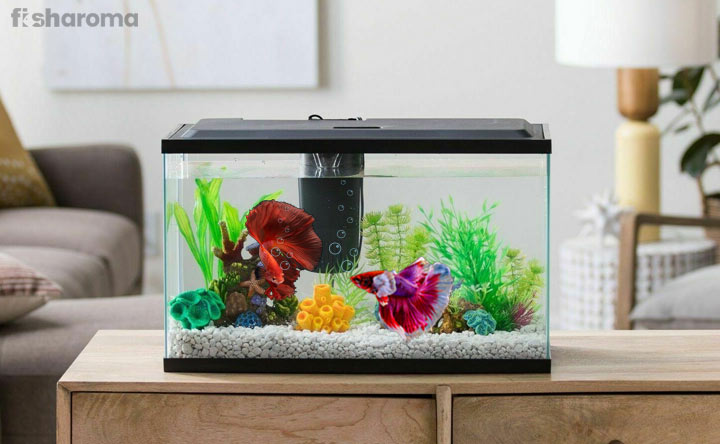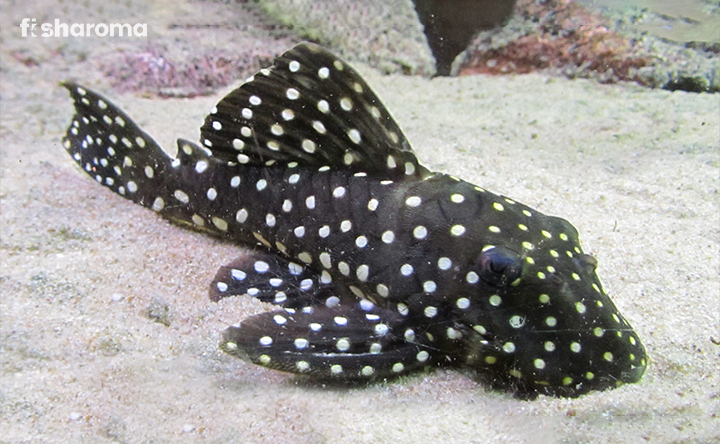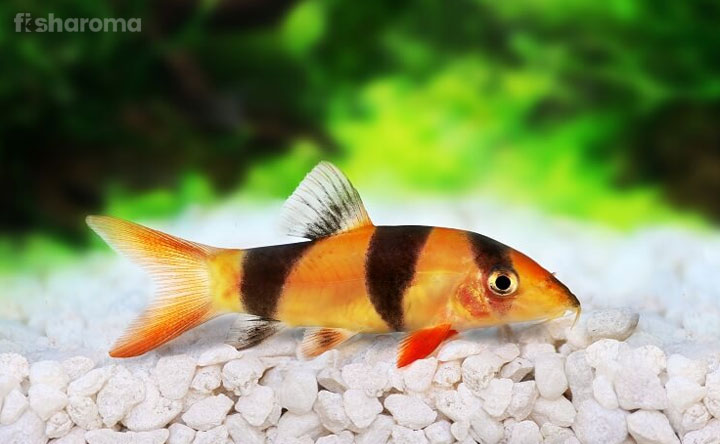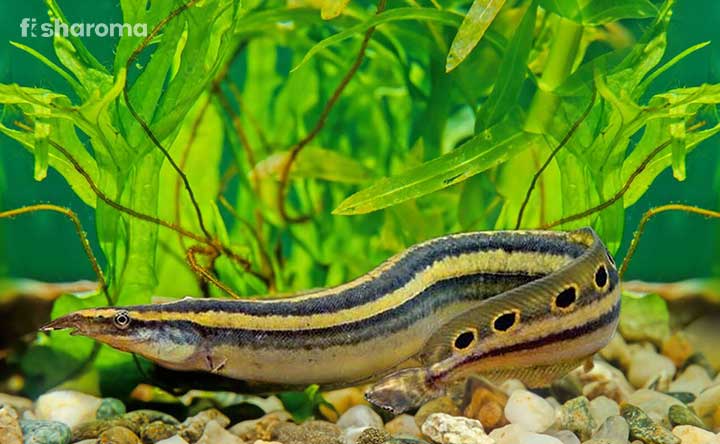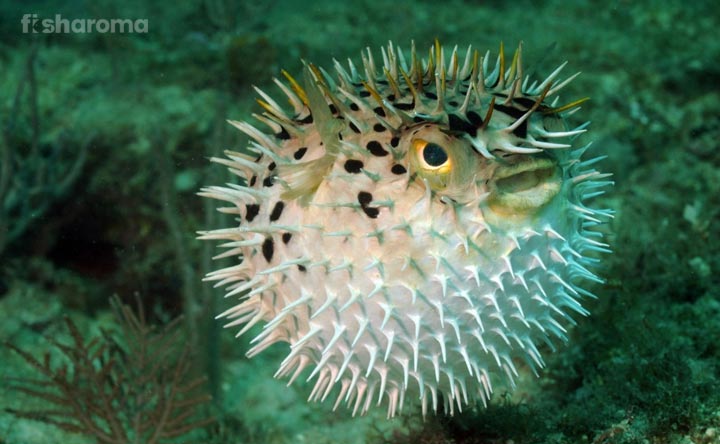Guppy Fish – The Complete Care Guide for Your Little Pet
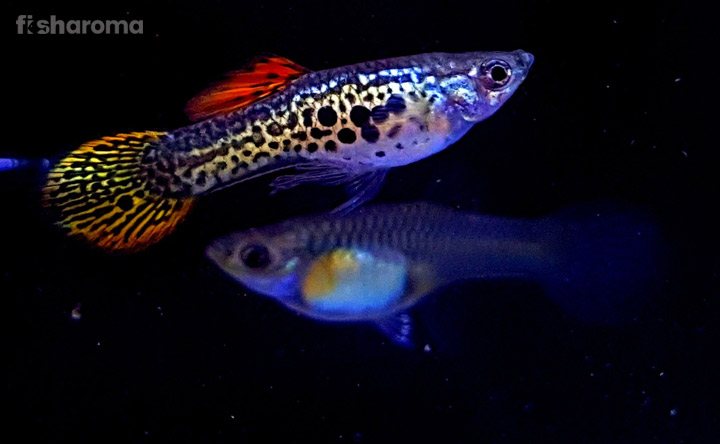
Many fish hobbyists want to set a colorful aquarium filled with lots of vibrant and multi-shaded fish and if you are reading this then you are one such person. So, why don’t you add a cute multi-colored Guppy Fish in your tank as an adornment? Not only the brightness and aesthetic patterns, but the peaceful nature and easy care-level of Guppy Fish are admired by most of the aquarists.
Now, before you decide adopting a Guppy Fish, first know the smart ways to take care of this breed as we are there to help you with a few ideas.
Quick Details on Guppy Fish
Before going deep into the topic about your cute little freshwater Guppy, have a short look at the table given below:
| Scientific Name | Poecilia reticulata |
| Origin | Guyana, Brazil, Barbados, Tobago, Trinidad, Netherlands Antilles, and Venezuela |
| Life-Span | Up to 2 years |
| Colors | Yellow, Orange, White, Blue, Green, Black, etc. |
| Temperament | Peaceful |
| Size | 0.6-2.4” (1.5-6.9 cm) |
| Diet | Omnivore |
| Family | Poeciliidae |
| Compatibility | With Other Peaceful Species |
| Tank Size | 5 gallons |
| Care Level | Easy |
Overview
There are about 300 species in the Guppy family with various colors, sizes, shapes, and patterns. Nowadays, aquarists know this adorable fish by different names such as, ‘Millionfish’, for their fast-breeding rate and ‘Rainbow Fish’ for the colorful shade. Moreover, fishkeepers like to pet this fish because this species is popular for controlling the mosquito population. You will get Guppies just in $0.10-$25.
Origin of Guppy Fish
The name ‘Guppy’ was derived from Robert John Lechmere Guppy, a geologist who founded this colorful breed in a river in Trinidad in 1866 and named it Guppy after his own name. This fish was renamed as ‘Girardinus Gupii’ by other researchers and kept in the aquatic museums of Britain.
Guppies come from the rivers and streams near South America (Trinidad, Guyana), North America (Barbados), Brazil, and lakes near Tobago, Netherlands Antilles, and Venezuela.
Appearance of Guppy Fish
We have already mentioned at the very beginning that Guppies have different colors, sizes, shapes, and patterns; every Guppy is dissimilar to one another in terms of appearance.
Most of the common male Guppies have colorful spots, splashes, and stripes in their bodies, whereas the females are typically gray with black spots. So, fishkeepers prefer keeping male Guppies, which are about 0.6-1.4” (1.5-3.5 cm) whereas the females are about 1.2-2.4” (3.4-6.9 cm) long.
The male Guppies have a long and narrow anal fin that is known as a gonopodium, and the females have a dark spot behind their anal fin known as gravid spot, which becomes darker during the time of pregnancy. It is quite simple to understand their sex difference.
Guppy Fish is known as ‘Rainbow Fish’ because of its multiple shades and patterns. Some of the varieties are metallic and transparent in color. Guppies can reflect light that creates an amazing shimmering effect in the water.
You will also find several patterns on its body of the fish like vertical lines, bicolor, chain-link pattern. Also, different fish have variant tail shapes such as triangular-shaped, fan-shaped, sword-shaped, round-shaped, flag-shaped, spade-shaped, lyretails and spear-shaped.
Guppy Fish Temperament
Guppy Fish is a peaceful breed that likes to live with a shoal of Guppies and other calm-natured small species. But it does not like dwelling with long-finned fish breeds because the long-finned fish may harm them by nipping their tail and fins.
This slow-water dweller is an active fish that swims and jumps fast in an aquarium. Sometimes the male fish are found chasing the females and trying to impress them by wriggling their fins.
Suitable Tankmates for Guppy Fish
You can keep Guppies in a community tank with small and passive-natured breeds that will never harm your cute buddies. You can also keep them with non-fish pets that are non-aggressive. Take a quick look at some suitable companions of Guppy:
- Platies
- Mollies
- Corydoras
- Bristlenose Plecos
- Neon Tetras
- Gouramis
- Ender’s Livebearers
- Ghost Shrimps
- African Dwarf Frogs
- Snails
Unsuitable Tankmates
Avoid housing them with large breeds which can make your pet Guppy their meal. Moreover, don’t keep fin-nippers in a Guppy tank that will scratch their fins. Here are some species that are unsuitable tankmates for Guppies:
- Sharks
- Barbs
- Aggressive Tetras
- Cichlids
Compatibility of Guppy Fish
You can keep 5-6 male Guppies together, and females too; but try to keep them separately, and maintain a ratio of 2:1 if you are keeping both the males and females together. While keeping two females, try to keep one male Guppy, and if you are housing two males then it can be kept with one female.
You may ask the reason behind it. Expert aquarists suggest not to keep a lot of females and males together because they are fast breeders and they can overpopulate your tank with multiple fries. If you maintain the ratio properly then your tank won’t be over-crowded and the female Guppies will not face much health issues.
Guppies do not live for more than two years because of their hasty breeding process. So, help your pet female Guppy in taking rest by managing the ratio of 2:1 during tank setting.
Dietary Requirements for Guppy Fish
This omnivoros fish likes eating both vegetative and meaty foods. Guppies are not fussy eaters, so whatever you give them, they will only eat that much amount. Now, you need to know the exact food requirements and quantity. If you have less knowledge then you can take help from expert aquarists or veterinary nutritionists.
Experienced fishkeepers suggest feeding them 1-2 times a day in a small quantity which it can finish within two minutes because overfeeding can block the intestine and it can also negatively affect the digestive system of the fish.
You can feed them foods by using cone feeders that are available in the market. Here are some varieties of food choices for Guppies:
- Bloodworms
- Mosquito Larvae
- Brine Shrimps
- Cucumber Slices
- Lettuce Leaves
- Peas
- Tomatoes
- Spinach Leaves
- Algae
You can also feed dry nutritious foods, available in the market like:
- Hikari Fancy Powerful Color Enhancing Diet for Guppies Fish Food
- Exotica Special Guppy Food
Guppies can survive a week without food but it negatively affects their health. If you are going out for a week then you can keep a high-quality automatic feeder or increase the lights of the tank; it will encourage the vegetation growth in the tank, and your fish can satiate its hunger by eating plant leaves.
Tank Requirements for Guppy Fish
Native to warm freshwater of South America, this fish needs a natural water condition and green environment to live. Make sure the tank set up is done appropriately and water is cycled properly while setting an aquarium for your pet Guppy.
Tank Size
Select a 10-gallon tank to keep about 4-5 Guppies because a 5-gallon aquarium is suitable just for two Guppies.
Ornaments
Embellish the aquarium with plenty of live floating plants like Java Moss, Amazon Sword Plant, and Hornwort because this fish loves vegetation. Also, put rocks and small gravels at the bottom of the tank. No special substrate is required because Guppy Fish lives on the top or middle section of the water.
Lighting
Guppy Fish are not too picky regarding the lighting of an aquarium, so you can fix a moderate light on the top-most part of the tank for energizing the live plants in the fish tank. You can also buy a plugin timer like Century 24 Hour Plug-in Mechanical Timer, which automatically turns on and off light if you set the timer.
Filter
You can keep a canister filter like ‘AquaClear’ that will help in pumping out the water contaminants and keeping the fish home crystal clear.
Water Type for Guppy Fish
Water is the most important element for an aquatic species. Therefore, while doing the water arrangement, always follow some necessary things to maintain the temperature of the water, which will help your pet Guppy live comfortably.
Temperature
Keep the temperature between 75-82°F (23.88-27.77°C). After setting the temperature, use a thermometer to check the temperature of the water regularly. You can also keep a heater like EHEIM Jager Aquarium Thermostat Heater 100W in the aquarium to maintain the temperature of the water as Guppies prefer dwelling in warm water.
pH Level
Try to keep the pH level about 7.0-7.8.
Hardness
The hardness of the water should be 8-12 dGH
Cleaning Method
It is necessary to clean the tank with a soft sponge and a mild liquid soap that has fewer chemicals. After washing out the dirt and algae from the tank, wipe it with a dry cotton cloth.
Replacement Process
Try to replace 10% water weekly or 30% of water monthly to maintain the quality of water. Check the temperature, pH level, and hardness while putting a new batch of water in the aquarium. You can add a water conditioner in the tank to kill the bacteria of the tap water.
Don’t keep large and sharp stones or gravels in the fish tank because the Guppies have delicate fins and the sharp edges of the gravels can hurt them.
Guppy Fish Breeding
Guppies are ready to mate and reproduce during the age of 3-5 months and start breeding at a high rate. They are livebearers that hold the eggs in their body. The babies get nourished in the egg sac for 4-5 days, and after absorbing it, the mother Guppy hatch its eggs inside the tummy and gives birth to live fries.
For the mating process, male Guppies wriggle their tails and attract the female fish. After coming to the contact, the female gets fertilized by the spermatophores of the male fish. Those sperms create thousands of broods.
Either you can keep the small fries in a separate breeding tank or keep a floating breeder box-like Marina Hang-On Breeding Box in the tank filled with water and young fries. The predators cannot eat the little fries if it is safely kept in the breeder box in the aquarium.
Diseases of Guppy Fish with Interventions
Guppy Fish is hardy in nature but its long tail makes it prone to bacterial and fungal infections. You will find small white patches on the scales of the fish that are known as Ich. In that condition, you will see it rubbing the body on the walls or objects of the tank.
Some Guppies are also prone to fin rot, and it is either caused because of the poor water quality or by the attack of fin-nipper aquatic species.
You need to follow some preventions to protect Guppies from such health issues:
- Try to keep the water condition good by cleaning the tank and replacing the water weekly.
- Make a proper food diet and feed that in proper time to your pet fish.
- Keep suitable tankmates with them to reduce their stress level.
- Avoid overcrowding their tank.
Types of Guppies
Guppies are known as Rainbow Fish because of its various shades. Among 300 species, let’s discuss some common Guppy Fish which you can keep in your aquarium:
- Albino Guppy – Due to a lack of melanin, the body-color of this fish is white. The large red eyes of this fish are attractive which is one of the reasons that fishkeepers like to pet this breed.
- Blue Guppy – This Guppy fish is solid blue in color, and some have light sky-blue shades on their body. The female Blue Guppy has silver patches on its fins and tails.
- Blue Green Bicolor Guppy – You will find blue metallic color in the tail region of the fish and the upper part of the body is grass-green shaded.
- Bronze Guppy – This Guppy fish has 25% of golden mixed bronze color on its body, and the scales of the fish are black in color.
- Half Black Red Guppy – It has basically a red body with a half-black trait. Even its tail is red in color.
- Black Blue Guppy – The topmost portion of this Guppy is yellow in color; the middle part is black and the fins of this tricolor fish are blue in color.
- Black-Pastel Guppy – Fins and tail of this Guppy Fish are solid pastel-shaded. The upper portion of its body is black in color. If you notice minutely then you will find light yellow hues in the anal fin region of this fish.
- Green Guppy – The shimmering green color of this fish makes it attractive and vibrant to the fishkeepers.
- Black Guppy – Implied by its name, this Black Guppy Fish is entirely black-shaded with a long and broad tail.
- Yellow Guppy – This Guppy has a dominant yellow body and a white belly. You will also find pinkish hues on the neck region of the fish.
- Purple Guppy – This fish is entirely shinning purple in color with a dark violet tail.
- Multi-Colored Guppy – You will get rainbow shades on the body of this colorful fish. Moreover, you will find different types of dots on its tail region.
- Red Guppy – This fish is entirely black in color with yellow hues on the neck region.
- Snakeskin Guppy – This fish has vertical black and orange patches on the belly and tail region just like a python. You will find silvery white color on the neck region of the fish.
- Leopard Tail Guppy – You will find black and orange leopard spots on the tail region of the fish.
Finale Note
After acquiring knowledge about the best qualities, features, and nature of Guppy Fish, we are sure that you will certainly like to add this breed in your colorful fish tank. Definitely, do that, but before that remember the instructions provided here.
Interesting Facts about Guppies
- Guppies like eating the malaria mosquitoes.
- It can reproduce about 100-120 live fries in a day.
- They are also known as cannibal because they eat their own fries.
- Kingfisher is one of the enemies of Guppy fish.
Brush Your Ideas about Other Small Fish Breeds
Along with Guppies, there are other small fish breeds, which you can keep in your tank. They are both peaceful and easy-to-care. To know completely about them, study these articles:
- Harlequin Rasbora: Rasboras also prefers schooling with the same community. Beginners like to pet this fish because of its small size and easy care-level. Know more about this breed by digging deep into the topic.
- Molly Fish: Like Guppy Fish, Mollies are also livebearers, and they are also found in different shades and patterns. For more information, read the entire article.

